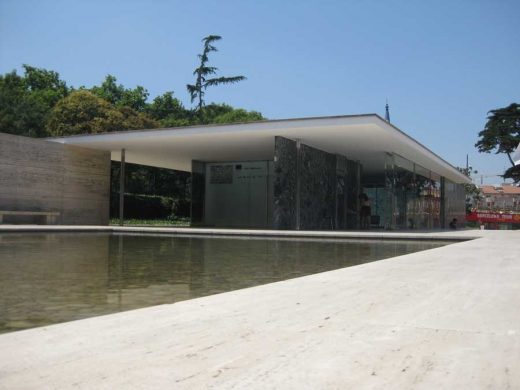How Does Automation Affect Architecture Tips, Advice, Building Guide
How Does Automation Affect Architecture, Really?
Oct 19, 2020
The world is advancing and it will continue to do so until the end of time. It’s expected that over 50% of the work done by humans is to be replaced by automation by the year 2040.
This is not science fiction, this is the harsh reality of job loss. Many industries are at risk, but what about modern architecture? Are architects going to be victims of automation?
In this article, we will cover how automation can affect architecture, and why it won’t have a drastic impact on job acquisition.
So if you’d like to know why architects are lucky, keep reading.
How Does Automation Affect Architecture Guide
Automation Of the Nation
Many people believe that the impact of automation will push the development of a universal basic income that will compensate for the substantial unemployment that generates new tech, but also the selective distribution of global wealth.
And it’s no surprise that it would be a plausible idea against the future of job displacement by artificial intelligence. However, will architects be replaced by robots?
Think about your past generations for a moment. During the 20th century, many businesses risen and fallen as new technology was developed. In those times, a great chunk of people was involved in agriculture and very little in technical fields.
Now, only 1% of the US population is involved in agriculture, and a greater amount of individuals are involved in technical work.
If you think over it, you probably notice that we speak of social media consultants, UX designers, drone specialists, data scientists, app developers, virtual reality developers, renderers, 3D architects, etc.
For these new professions, it’s important to learn new technologies and develop skills that have not been projected by the job market. This training takes years and lots of resources. We know that those who lost their work in agriculture could not have become data scientists in an instant. This generational transition is difficult.
The future holds a fragile social class of overqualified, unhireable, and populated precariat. In this sense, the emergence of Uber and other applications have created new economies, but have not really created new jobs. There are no benefits, no pensions, no holidays, no social protections.
What Cannot Be Replaced
So what do the most difficult jobs have that others do not? Well, many of them require human interaction and don’t lean on repetitive action throughout the workday.
Employees who can combine interpersonal skills and mathematical logic should be able to find many lucrative opportunities shortly. The future holds a dear space for soft skills, such as cooperation and empathy.
Knowing how to assess and critically think is more valuable than the careers we believe are valuable now such as CPA or programming.
Artificial intelligence will not replace the work of architects in modern architecture. But, this does not constitute that the profession will be exempt from transformation.
On the contrary, the software will eliminate the need for repetitive action, optimize the development of technical documentation, atomize the size of architect offices, and makes things remote.
Each time requiring fewer and fewer architects to develop a complex project.
It’s one thing to be efficient by using the latest software, it’s another thing to integrate fully with artificial intelligence. We are not predicting a war on machines, but a progressive erosion of what the profession of an architect holds.
With currently demonstrated technologies, very few professions are potential candidates for entire automation. But every other occupation will hold to the partial automation, as a portion of daily tasks can be delegated to AI.
So once again, while the job of an architect is not going to be made obsolete, it will look very different from what it does look like now.
Modern Architecture: What Does It Entail?
In premise, an architect is somebody who designs, plans, and analyzes the construction of buildings. To practice architecture is to provide services about the design of buildings and the spaces surrounding them. Primarily, for those buildings whose primary purpose is human use or occupancy…
Let’s take a look at each of those activities with a bit more depth.
An Architect Plans
A quite vague activity, but planning projects require lots of code research, site analysis, and a variety of other administrative activities. A large portion of this work can certainly be automated.
The information is already there, so it can easily be filtered and compiled by non-humans into digestible formats.
An Architect Designs
Design is potentially the hardest task to automate. The ability to take a concept from other influences would be hard to copy. Nonetheless, AI will play a large role in the design.
Potentially being able to generate several options based on parameters, or used as a search engine to discover already reliable designs.
A database for every detail of any building with the costs, data, and analysis for components. Imaging Google on steroids. Discover more about the benefits of automation to see why it’s not a bad thing.
An Architect Analyzes
The task of building analysis can certainly be enhanced via technology. For example, cameras are already installed on large building sites to review constructions. This data could be referenced with design models to check for errors.
On a logical basis, architects will spend less time on activities that are easily replaced, and invest in aspects of their irreplaceable work.
Architects Get Ready
Now that you know about the implications of technology on modern architecture, you are well on your way to prepare yourself and develop the skills that will make your life as an architect valuable.
As long as you go with the flow and learn to adapt, there is no reason for you to not be able to work. If you’re interested in similar content, feel free to check out other tech-related content on the sidebar.
Comments on this How Does Automation Affect Architecture, Really? advice article are welcome.
Design Articles
Building Articles
Comments / photos for the How Does Automation Affect Architecture Guide page welcome



